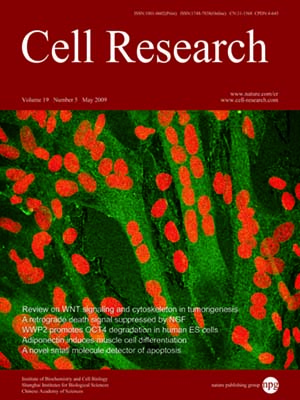
Volume 19, No 5, May 2009
ISSN: 1001-0602
EISSN: 1748-7838 2018
impact factor 17.848*
(Clarivate Analytics, 2019)
Volume 19 Issue 5, May 2009: 598-611
ORIGINAL ARTICLES
NECK LEAF 1, a GATA type transcription factor, modulates organogenesis by regulating the expression of multiple regulatory genes during reproductive development in rice
Liping Wang1,3, Hengfu Yin1, Qian Qian2, Jun Yang1, Chaofeng Huang1, Xiaohe Hu1 and Da Luo1
1National Key Laboratory of Plant Molecular Genetics, Institute of Plant Physiology and Ecology, Shanghai Institutes for Biological Sciences, Graduate School of the Chinese Academy of Sciences, Chinese Academy of Sciences, Shanghai 200032, China
2China National Rice Research Institute, Chinese Academy of Agricultural Sciences, Hangzhou 310006, China
3Present address: Plant Biotechnology Institute, National Research Council of Canada, 110 Gymnasium Place, Saskatoon, SK S7N 0W9, Canada
Correspondence: Da Luo,(dluo@sibs.ac.cn )
In the monocot rice species Oryza sativa L., one of the most striking morphological processes during reproductive development is the concurrence of panicle development with the sequential elongation of upper internodes (UPIs). To elucidate the underlying molecular mechanisms, we cloned the rice gene NECK LEAF 1 (NL1), which when mutated results in delays in flowering time, smaller panicles with overgrown bracts and abnormal UPI elongation patterns. The NL1 gene encodes a GATA-type transcription factor with a single zinc finger domain, and its transcripts are detected predominantly in the bract primordia, which normally degenerate in the wild-type plants. Overexpression of NL1 in transgenic plants often gives rise to severe growth retardation, less vegetative phytomers and smaller leaves, suggesting that NL1 plays an important role in organ differentiation. A novel mutant allele of PLASTOCHRON1 (PLA1), a gene known to play a key role in regulating leaf initiation, was identified in this study. Genetic analysis demonstrated an interaction between nl1 and pla1, with NL1 acting upstream of PLA1. The expression level and spatial pattern of PLA1 were found to be altered in the nl1 mutant. Furthermore, the expression of two regulators of flowering, Hd3a and OsMADS1, was also affected in the nl1 mutant. On the basis of these findings, we propose that NL1 is an intrinsic factor that modulates and coordinates organogenesis through regulating the expression of PLA1 and other regulatory genes during reproductive development in rice.
Cell Research (2009) 19:598-611. doi: 10.1038/cr.2009.36; published online 31 March 2009
FULL TEXT | PDF
Browse 1845


